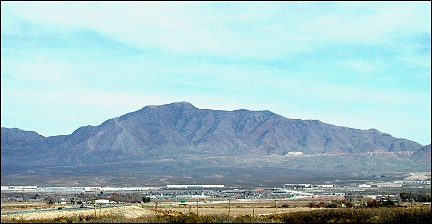

April 22, 1970—the first Earth Day. Now, over 30 years later, this day of environmental awareness is celebrated by millions of people in over 180 countries. In late 1969, Wisconsin Senator Gaylord Nelson got the idea for Earth Day from the anti-war teach-ins being held at colleges throughout the nation. Little did he know that his idea to create a national teach-in for the environment would become so widely celebrated. But with populations and pollution constantly increasing, this day may be among the most important holidays, worldwide. It reaches across ages, languages, professions, and cultures, in the hopes of making our world a better place for us and for future generations.
This Earth Day, stop to consider your part the world around us. Pick up
some trash, hike into the scenic mountains, vow to dispose of waste properly, or visit
the Chihuahuan Desert Gardens at UTEP, where you can see many beautiful,
desert-friendly plants. Try to find a way to make this day personally meaningful, and
in the process, celebrate the bounty and beauty of our wonderful planet.

Listen to the Audio (mp3 format) as recorded by KTEP, Public Radio for the Southwest.
Contributor: Kodi R. Jeffery, Centennial Museum, University of Texas at El Paso.
Desert Diary is a joint production of the Centennial Museum and KTEP National Public Radio at the University of Texas at El Paso.

North Franklin Peak viewed from the west. Developments within the Rio Grande Valley in the foreground and the road cut-and-fill leading to Smuggler's Pass (on right side of image) are visible signs of human impact. Photograph by A.H. Harris
Earthweek—a Diary of the Planet. Weekly summaries and classroom activities focused on the week's environmental news.
EPA (Environmental Protection Agency).